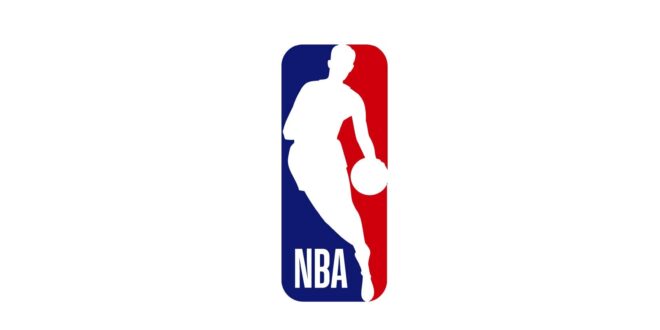**INDIANAPOLIS** – For the 20th time in league history, the NBA Finals are headed to a decisive Game 7.
Facing elimination, the Indiana Pacers delivered one of their most impressive defensive performances to claim a commanding 108-91 victory over the Oklahoma City Thunder in Game 6 on Thursday night.
Throughout the first five games of the series, the Thunder managed to score under one point per possession in only two out of 20 quarters. However, in Game 6, Indiana’s defense restricted them to below that mark in each of the initial three quarters, ultimately forcing the Thunder to concede after just 36 minutes of play.
In the fourth quarter, with their reserves on the court, Oklahoma City could only muster 31 points on 27 possessions, marking their lowest offensive output in any game this season (90.1 per 100 possessions).
Below are some observations, statistics, and analysis on how Indiana secured crucial stops and earned another opportunity to play in Oklahoma City for Game 7 on Sunday at 8 PM ET on ABC.
T.J. McConnell shared insights with NBA TV following his exceptional performance in Game 6 of the Finals.
During the regular season, the Thunder averaged 21.4 deflections per game, the highest in the last nine seasons. In the first two games of this series, they outperformed the Pacers in deflections, tallying 48 to Indiana’s 21.
However, the Pacers recorded more deflections in three of the last four games, including a series-high 21-12 advantage in Game 6. Both Tyrese Haliburton and T.J. McConnell faced defensive challenges, yet they collectively executed eight of the team’s 21 deflections during Game 6.
The Pacers struggled initially, scoring just two points on their first seven possessions, but then ignited a 24-7 run that solidified their lead. After scoring on five consecutive possessions, the Thunder managed a stop, but as McConnell hustled back on defense, he monitored Jalen Williams, who attempted to make a pass to Alex Caruso. McConnell intercepted the pass, secured the loose ball, and assisted Obi Toppin in hitting a transition three-pointer that extended Indiana’s lead to six.
Though the Thunder narrowed the gap to one point early in the second quarter, they soon fell silent, managing to score only once in their next 11 possessions, a drought punctuated by a Haliburton steal converting into another transition three-pointer, this time from Aaron Nesmith.
As Indiana continued to build momentum, the standout moment of the night occurred just before halftime, initiated by yet another steal from Haliburton. After missing a shot and trailing the play, he eschewed his usual assignment on Lu Dort to apply a soft double-team on Williams. When Williams attempted to pass to Dort, Haliburton deflected it, recovered the loose ball, and dished it to Pascal Siakam, who executed a powerful dunk over Williams.
Defensive plays, particularly deflections, can create scoring opportunities, and the Pacers netted 32 points in transition on Thursday, according to Synergy tracking. This was the highest total for either team in the Finals and 14 points more than Indiana’s best in any of the previous five games.
In the initial five contests, the Thunder converted a respectable 1.14 points per opportunity (82 points on 72 possessions) against Indiana’s double-team of Shai Gilgeous-Alexander. Indiana persisted in sending doubles when their reigning Kia MVP was posted up by Andrew Nembhard, but the Thunder failed to make effective counterplays.
Oklahoma City squandered a few decent shooting opportunities when Gilgeous-Alexander passed out of congested situations, but very often, the ball never got out.
Amidst the Thunder’s scoring slump in the second quarter, Gilgeous-Alexander attempted to overpower Nembhard one-on-one. Nembhard ceded some ground but maintained his defensive presence, allowing McConnell to swoop in from the blind side and secure a steal.
Down by 22 at halftime, the Thunder aimed to stage a comeback by holding Indiana scoreless during their first six possessions of the third quarter. However, Oklahoma City failed to score in their first eight possessions of that period, with another turnover from Gilgeous-Alexander included.
Once again, he took on Nembhard alone, backing him down to the right block. This time, Nesmith arrived to double-team, and his quick reflexes deflected Gilgeous-Alexander’s (somewhat lackadaisical) kick-out pass to Williams.
Gilgeous-Alexander’s eight turnovers in Game 6 equaled his career high and were two more than his total across the last 44 playoff games. With significant advantages in both turnovers (11-21) and offensive rebounds (11-4), the Pacers enjoyed 18 more scoring opportunities (field goal attempts or free throws) than the Thunder in Game 6, representing the largest discrepancy Oklahoma City faced this season.
The Thunder managed only 11 points on 18 chances when the Pacers trapped Gilgeous-Alexander on Thursday, making it likely that we will see increased defensive pressure in Game 7.
Some of the offensive struggles for the Thunder were self-inflicted; a glaring example was Gilgeous-Alexander’s one-handed pass in the previously mentioned situation.
His initial turnover resulted from a failed attempt to exploit a nonexistent gap. Following a high screen from Isaiah Hartenstein, Gilgeous-Alexander aimed to navigate between defenders—an approach he has often executed successfully during this series. Unfortunately, tight spacing led to Myles Turner disrupting his attempt, which Nembhard seized for the steal.
There were also issues with poor spacing and forced drives into resistant defenders, accompanied by a lack of perception to capitalize when advantages presented themselves.
When both teams struggled to score during the opening 2.5 minutes of the third quarter, the Thunder had a five-on-four advantage as Siakam was on the floor nursing an injury at the opposite end. However, instead of circulating the ball to find an open shot, Chet Holmgren opted to take on Turner one-on-one.
After Turner thwarted Holmgren’s drive, Chet located a cutting Alex Caruso, but Turner was still under the basket in time to block Caruso’s layup.
This series has exhibited a stark contrast in ball movement, with the Pacers registering 718 more passes than the Thunder throughout the six games. Increased ball movement doesn’t necessarily ensure better offensive success, and while the Thunder have found some favorable outcomes in isolation plays, they have also missed chances for better shots.
The confrontation between the Pacers’ offense and the Thunder’s defense was the primary storyline anticipated in this series; however, it has been the other side of the game that has ultimately influenced outcomes, as Oklahoma City has scored 19.4 more points per 100 possessions in their three victories (120.4) compared to their three losses (101.0).
While Game 7s can often yield unattractive basketball, the last time the Pacers found themselves in such a situation (against New York last year), they set a playoff record by shooting 67.1%. Although a repeat of that performance seems unlikely, the Thunder must elevate their offensive game beyond what they exhibited on Thursday.
***
John Schuhmann serves as a senior stats analyst for NBA.com. You can reach him via email here, access his archive here, and follow him on X.
The opinions expressed in this article do not necessarily represent those of the NBA, its teams, or Warner Bros. Discovery.
 NBA News NBA News, Match Reports and Updates
NBA News NBA News, Match Reports and Updates



